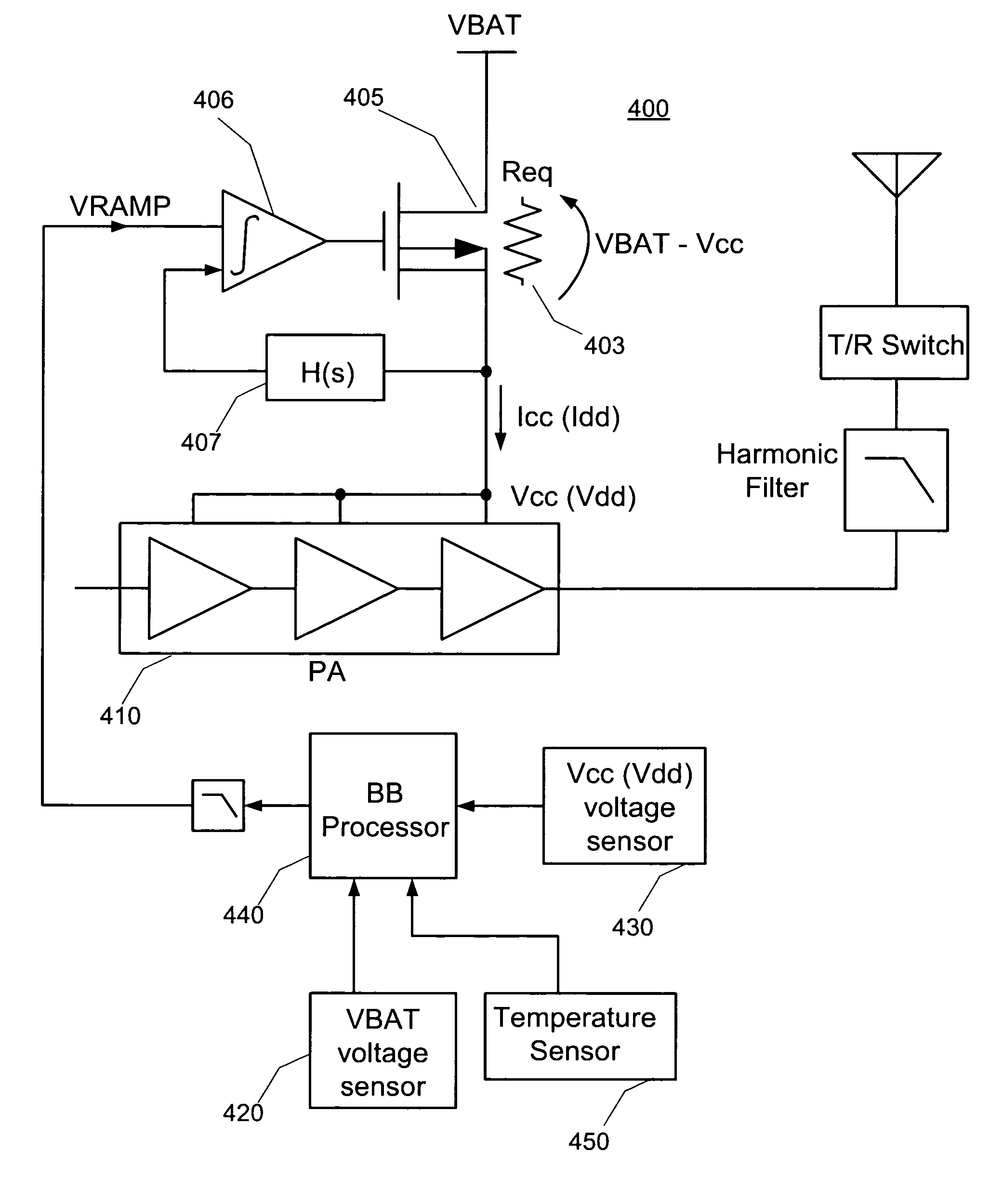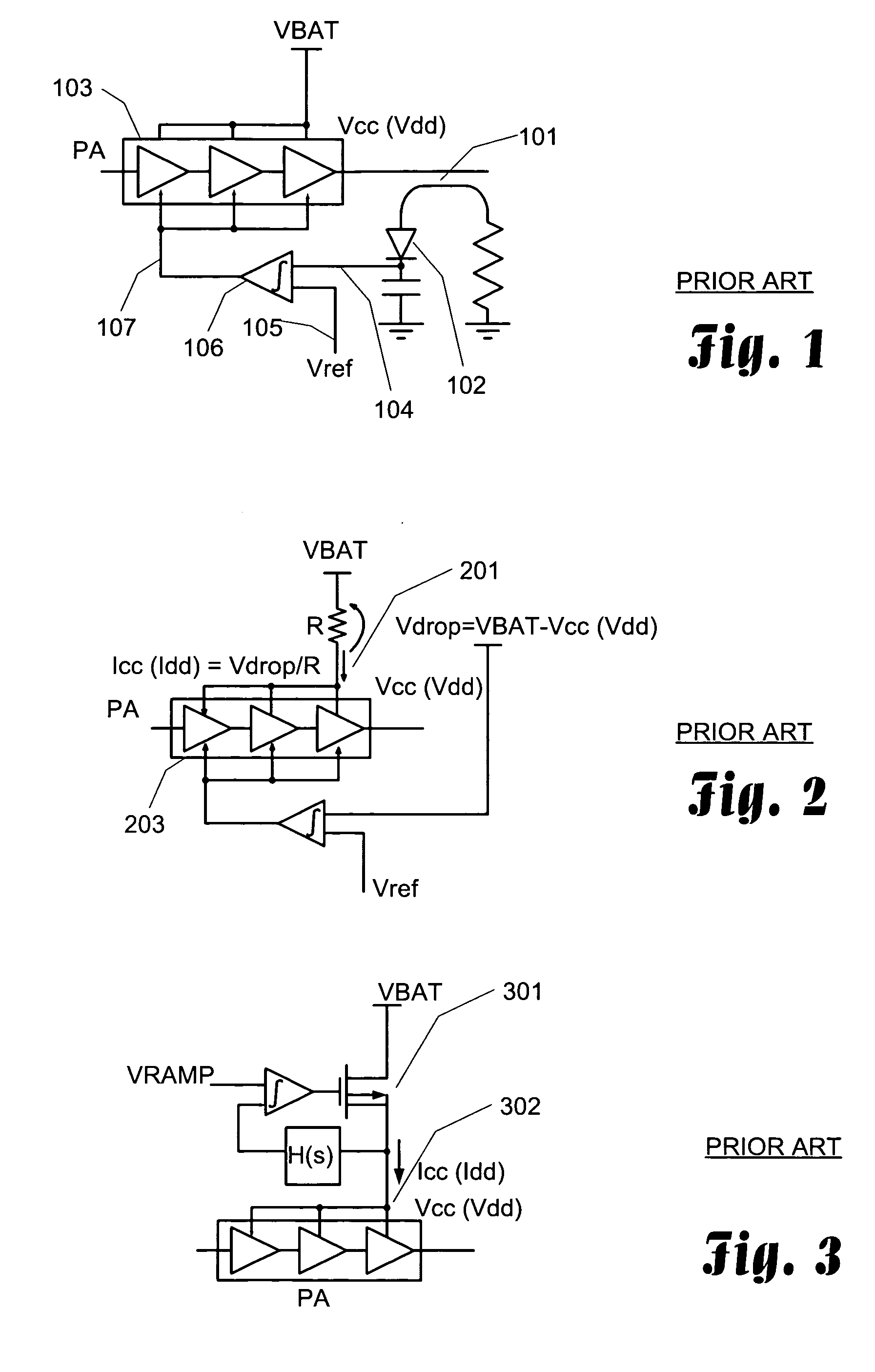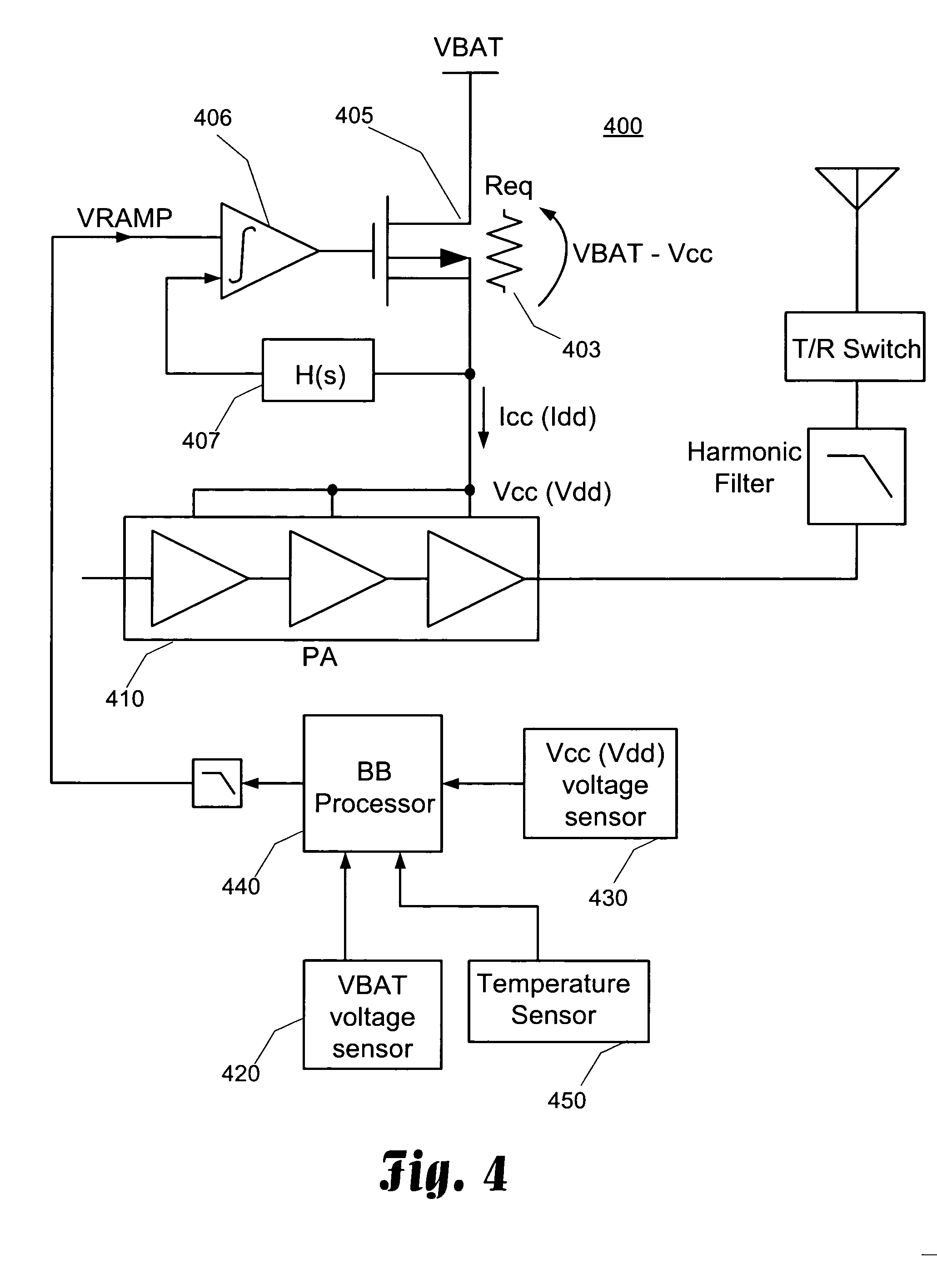Method to control the supply power being provided to a power amplifier
a power amplifier and supply power technology, applied in the direction of amplifiers, amplifiers with semiconductor devices/discharge tubes, amplifier protection circuit arrangements, etc., can solve the problems of significant influence on the output load impedance seen by the power amplifier, degrade the efficiency of power amplifier operation, and add new technology
- Summary
- Abstract
- Description
- Claims
- Application Information
AI Technical Summary
Benefits of technology
Problems solved by technology
Method used
Image
Examples
Embodiment Construction
[0021] The present invention provides a power control circuit that operates to prevent, or reduce the likelihood of an over current condition in the power amplifier circuitry. In general, the present invention detects the power being utilized by a power amplifier by either monitoring the current supplied to the power amplifier or by monitoring the level of the supply voltage. Typically, when an over current condition exists in the power amplifier, the frequency characteristics of the power amplifier are either approaching, or are actually out of specification requirements. For instance, in a cellular transmission system, the mobile stations are required to limit the output power and spurious emissions according to specifications for the cellular transmission system. These specifications are established to prevent cross-talk and channel interference within the cellular frequency spectrum, as well as reduce electromagnetic interference.
[0022] Turning now to the figures in which like ...
PUM
 Login to View More
Login to View More Abstract
Description
Claims
Application Information
 Login to View More
Login to View More - R&D
- Intellectual Property
- Life Sciences
- Materials
- Tech Scout
- Unparalleled Data Quality
- Higher Quality Content
- 60% Fewer Hallucinations
Browse by: Latest US Patents, China's latest patents, Technical Efficacy Thesaurus, Application Domain, Technology Topic, Popular Technical Reports.
© 2025 PatSnap. All rights reserved.Legal|Privacy policy|Modern Slavery Act Transparency Statement|Sitemap|About US| Contact US: help@patsnap.com



